Bobby Blue Bland
“His California Album”, Bear Family Records
Arguably, next to Otis Redding, James Brown, or Johnnie Taylor, you would be hard pressed to find a singer smoother, more authentic, and cooler than Bobby Blue Bland. You’ve heard the phrase, “Go west young man;” and that’s exactly what Bland did for this early 1970s masterpiece.
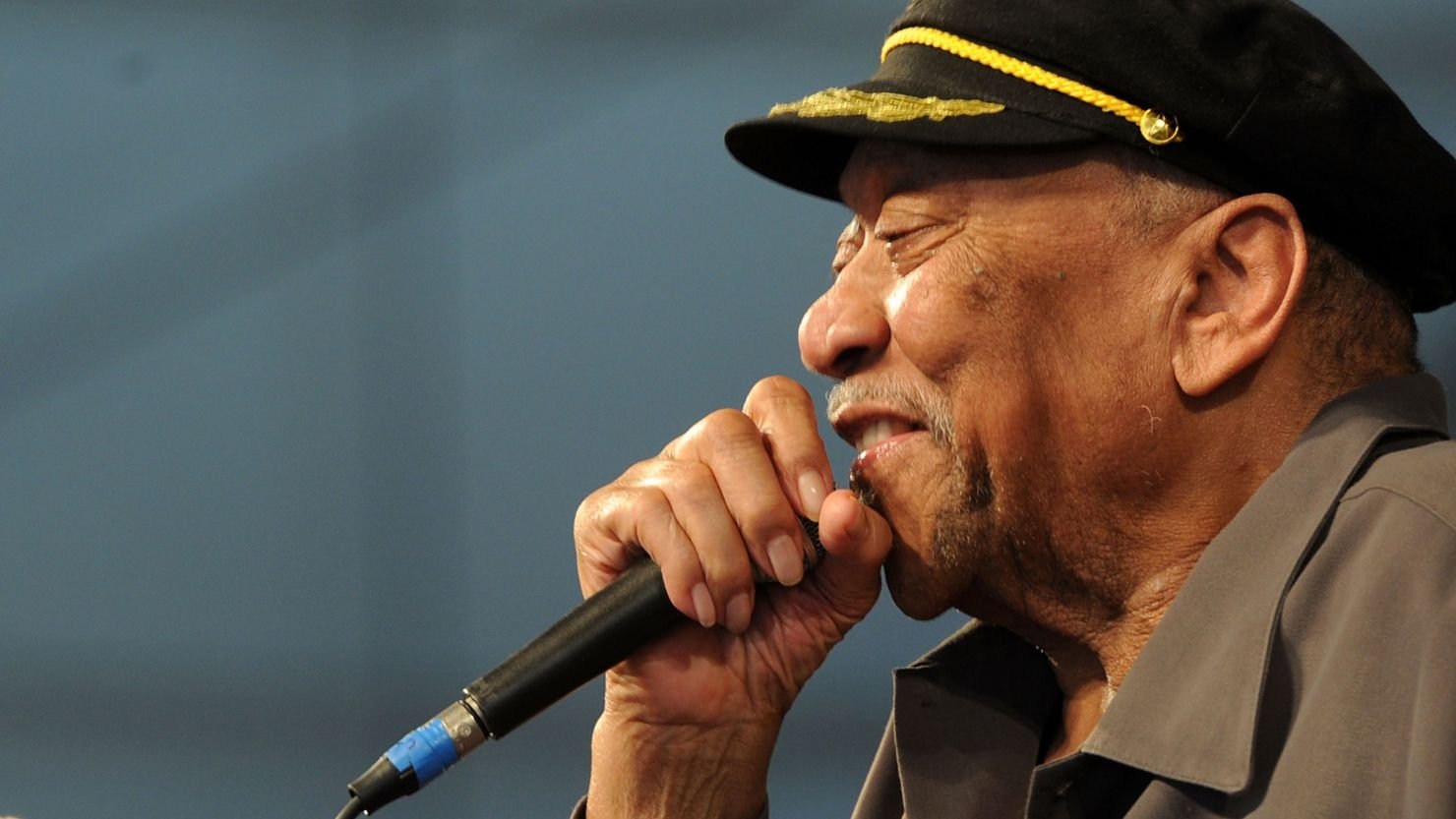
This re-issue album by Americana/early rock and blues music archivists Bear Family Records was originally released on ABC/Dunhill. In fact, this was the second record produced by Steve Barri, with Los Angeles session musicians. The first was called “Dreamer,” as both records possessed a sound that brought out all aspects of Bland’s oeuvre, including ballads, jazzy moments, gospel flourishes and funky grooves too.
As the enclosed press material for this album notes, Bland could be tough and gritty, but also had a crooning quality to his vocal style reflective of Nat “King” Cole. You get all sides of him here. And, you have the cream of the crop, session player-wise, with heavyweight guitarists like Larry Carlton and Dean Parks, bassist Wilton Felder, keyboardist/arranger Michael Omartian and saxophonist Ernie Watts, among select others. But for all that firepower, they all defer to, and never overshadow, Bland and the songs at hand.
“I’ve Got to Use My Imagination” by Bobby Blue Bland
https://www.youtube.com/watch?v=_GpxPvs2aKA
It’s a strong roster of R&B and soul standards represented here such as “If Loving You is Wrong (I Don’t Want to Be Right),” “Goin’ Down Slow,” “Help Me Through the Day,” and “I’ve Got to Use My Imagination.” Bland milks every last nuance and emotion out of a lyric and often calls up a messianic growl at the end of a phrase to really sell the song. Also, the combination of strings, horns, and backing vocalists tastefully add dramatic weight and depth, without drifting into saccharine or syrupy nonsense.
Recorded in 1973-’74, this is a milestone in soul/blues history that is beautifully re-mastered and rendered on 180 gram vinyl. Highly recommended!
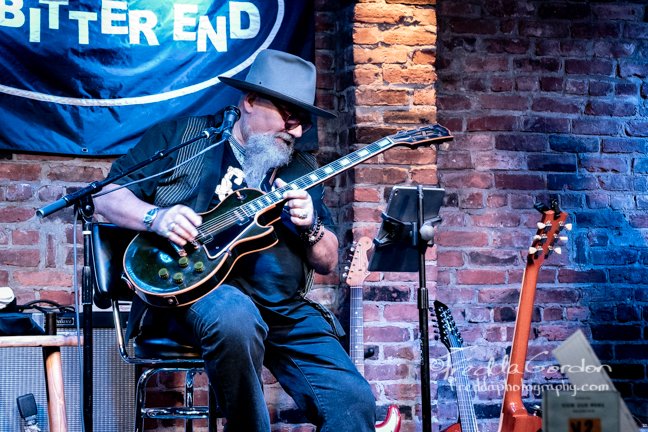
Jimmy Vivino
“Gonna Be 2 Of Those Days” album, Gulf Coast Records
Many folks probably know guitarist, singer, and songwriter Jimmy Vivino from his many years on television as a member of Conan O’Brien’s orchestra. He steps out with a bold jazzy rock and blues debut on premier blues label Gulf Coast Records. And, not only does he have a crack core band at the helm, but he’s joined by esteemed guests such as the ubiquitous guitarist Joe Bonamassa and legendary lead voice of The Lovin’ Spoonful, John Sebastian on harmonica and acoustic guitar.
In addition to playing for 30 years on TV with Conan O’Brien, he’s supported a litany of who’s who artists such as Levon Helm, Phoebe Snow, James Cotton, Jimmie Vaughan, Canned Heat, Warren Haynes and just about anybody that passed through New York City looking for a musician that could play legit blues, R&B, and soulful rock.
“Gonna Be Two of Those Days” by Jimmy Vivino
https://www.youtube.com/watch?v=Itf1_KriQdQ
You get all those musical styles and more, with this stellar release. Vivino is a modern bluesman, a gritty soulful vocalist and an equally literary songsmith that spins eleven tales of cinematic-styled depth and relevance. One case in point is the lead-off track “Blues in the 21st.” Anybody reading this review has been, assuredly, affected by the pandemic in some kind of way. Well, this song plays like a bluesy breaking news report. It’s an existential dissection of what many people have experienced where everybody wears a mask and life will never be the same. That’s followed by “Ruby is Back.” “You better hide your heart,” instructs Vivino as he delivers this straight ahead blues shuffle in the vein of Eric Clapton, Buddy Guy, and John Mayall. The title track “Gonna Be Two Of Those Days” treads on classic blues territory where nothing is going right and it’s “double trouble” for our protagonist. This is a jazzy blues shuffle, with a lounge-like ‘50s/early’60s feel ala T-Bone Walker. “Beware the Wolf” is a 1-4-5 shuffle and the first appearance of Sebastian on harmonica. “Ain’t Nuthin’s Gonna Be Alright” plays like the title suggests; it is bad luck personified wrapped in a vibe of dark noir-ish flourishes and mystical filigree. “Better Days Past” and “Fool’s Gold” are back-to-back bookend songs in terms of great storytelling, epic dynamics, and intense guitar work. Vivino speaks from his heart and almost takes on an auto-biographical veneer with songs like these. “Goin’ Down Fast” is significant for its take on climate change. It features stellar accordion from Scott Healy and bubbles with a New Orleans sensibility. “Back Up the Country” seems to make veiled references to similar lyrics by the band Canned Heat. And that would be honest, for Vivino who is a current member of that esteemed and legendary group. But this is the leader’s original commentary on 21st century urban sprawl as he astutely states, “They paved paradise just like Joni (Mitchell) said.” It’s a wise observation regarding modern commercialism and our seemingly eroding environment.
Jimmy Vivino has been active in all levels of the music world, from movies, TV, and Broadway to funky little nightclubs. And he has been modestly quoted as saying, “I’m just a bluesman with a job.” But, with his considerable guitar playing prowess and penchant for insightful lyrics and inventive songs, he is much more than that. He is a unique entity; a crafty and clever poet laureate that far exceeds that job description.
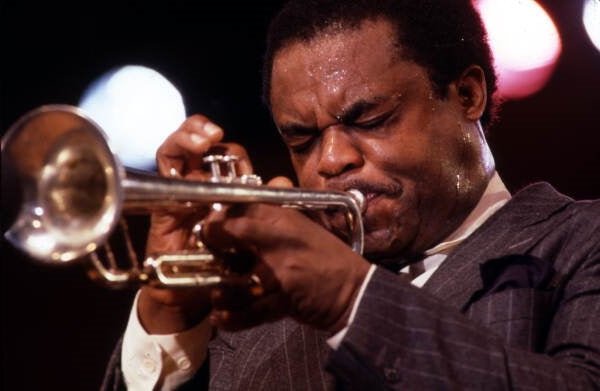
Freddie Hubbard
“On Fire: Live From the Blue Morocco” album, Resonance Records
Freddie Hubbard was one of the modern post-bop trumpeters that changed the jazz game and influenced so many during his lifetime and beyond. This two-CD package is a precious time capsule and an essential document of an artist at the peak of his powers. Hubbard and crew are captured in April of 1967 at this NYC Bronx jazz hot spot called Blue Morocco.
The aforementioned “crew” are legends in their own right, with Bennie Maupin on tenor saxophone, Kenny Barron on piano, Herbie Lewis on bass, and Freddie Waits on drums. They play extended sets filled with Hubbard’s inventive compositions and a couple smartly arranged standards.
The intrepid trumpeter covered all the musical bases in the jazz world, from the more traditional stylings of Art Blakey & The Jazz Messengers to dates with John Coltrane and Ornette Coleman. His Blue Note and Impulse Records releases are legendary as well as later recordings for CTI, Columbia, and tunes like “Skydive” and “Red Clay.”
“Crisis” by Freddie Hubbard
On CD1, from the get go, Hubbard erupts out of the fray, with his urgent and appropriately titled composition “Crisis.” Hubbard burns on legato passages and floating melodies from the outset. But there is also a lyrical and romantic flow to the way the music moves. In particular, the interaction between the leader and Maupin is simpatico. “Up Jumped Spring” is a bright and spry melody. Hubbard’s use of muted passages leads the way for the mellow interplay of Waits’ sensitive brush work, Barron’s diligent chord comping, and Maupin’s smooth lines. “Echoes of Blue” is a cover song and acts as kind of a set piece for bass player Lewis to grab the spotlight. Barron sets the mood with rubato runs and decorative framework. Maupin and Hubbard do this call and response thing that sparks up the energy to a dramatic finale. The first portion of the show concludes with Hubbard’s “True Colors/Breaking Point.” This composition is somewhat frenetic, with a slight nod to the avant garde. It’s high concept modal bop where each musician tries to one up the other as their collective ideas evolve and grow. In particular, Maupin plays with freedom and bravado ala John Coltrane or Archie Shepp. Waits unfolds a totally unhinged drum break that brings the house down. There is a brief interlude at the end featuring the leader’s theme called “Breaking Point.” This will be reprised in more detail as the final tune on CD 2.
CD 2 features three extended tracks beginning with the Tin Pan Alley classic “Bye Bye Blackbird.” It’s a great interpretation taken at a very light and brisk pace. Hubbard’s solos are effervescent and golden. The rhythm section of Waits and Lewis just blaze through this pushing and pulling on the groove and helping shape the contours and character of the lead melodies and solos. The George and Ira Gershwin nugget “Summertime” has been done by so many artists in every arrangement possible. Hubbard and company opt for an asymmetrical approach giving the tune a waltz-like feel. It’s taken at a medium tempo where Hubbard measures a blend of fire and lyricism unlike no other. The second, and more developed, iteration of the leader’s “Breaking Point” theme essentially serves as a sort of vamp where each band member can stretch out and do some emotive blowing. The results are stunning and resolve with Hubbard addressing the crowd: “I hope you enjoyed yourselves and tell all your friends, especially the square ones, because they’ve got the most money.”
Resonance Records have a series of excellent vintage live jazz releases, including recent posthumous titles by Emily Remler, Bill Evans, Charles Mingus, Kenny Dorham. and others. This Freddie Hubbard release is certainly no exception. Included in the two disc package is a 29-page booklet, with rare photos, graphics, and insightful commentary on those musicians that knew and/or played with Hubbard ,including Kenny Barron, Jeremy Pelt, Benny Maupin, and original live recording engineer Bernard Drayton.
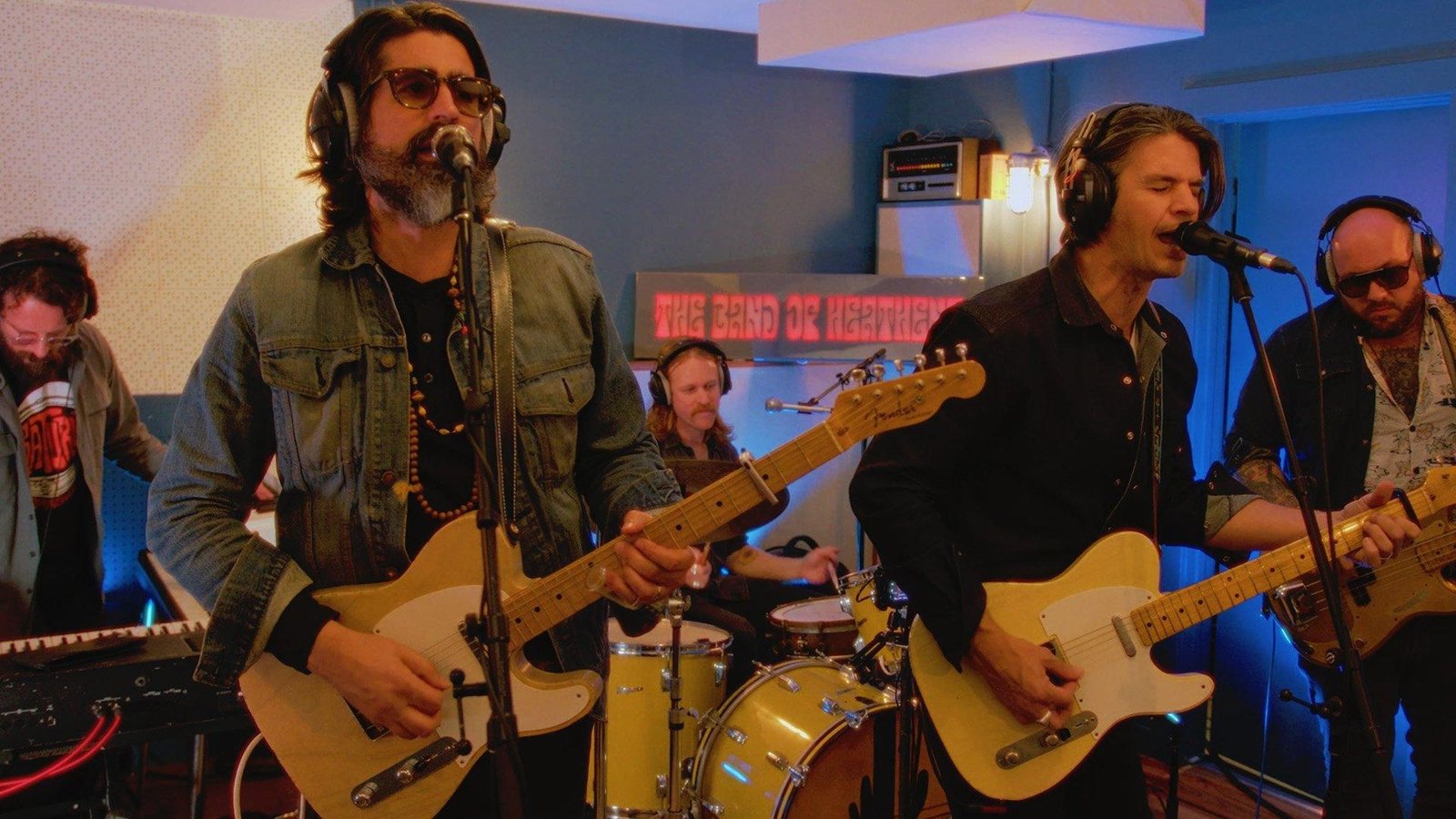
The Band of Heathens
“Live at Rockpalast 2009” album, MIG Music
The Band of Heathens is a country, blues, and Americana group from Austin, Texas that originally formed in 2005. This CD/DVD release compiles some of their more noteworthy songs, with extended jams and some acoustic moments. The band lineup consists of Ed Jurdi on vocals, guitar, keyboards and harmonica; Gordy Quist on vocals and guitar; Colin Brooks on vocals, guitar and lapsteel; Seth Whitney on bass; and John Chipman on drums.
Like many other American groups, Germany was one of the first countries to embrace the Texas band. So, when they were bestowed the opportunity to play the Crossroads Festival in Bonn, Germany on November 8, 2009, and have it broadcast by Rockpalast—one of the top live music TV shows in Europe—they jumped at the chance. The 15 tracks here capture the quintet in their comfort zone and at their best.
“Somebody Tell the Truth” by The Band of Heathens
The front line of Jurdi, Quist, and Brooks is seamless and airtight in how they harmonize, take turns doing lead vocal sections, and dovetail perfectly. The rhythm section of Whitney and Chipman is simultaneously loose and nimble. The overall result is a country, blues, and Southwestern amalgam that lends itself to colorful storytelling and interactive solos. Songs like “What’s This World” and “Shine a Light” blend country crooning with supportive slide guitar work. Brooks’ Dobro mastery on “Nine Steps Down” is sublime and “Somebody Tell the Truth” reveals their funky jam-oriented soul roots.
The video and audio captures and angles really put you in the driver’s seat. This is a no nonsense band in that they came to play and, for nearly 90 minutes, it’s all about service to the songs. RIYL: Dawes, The Jayhawks, The Band, Grateful Dead, Little Feat or, even, the acoustic side of The Doobie Brothers.
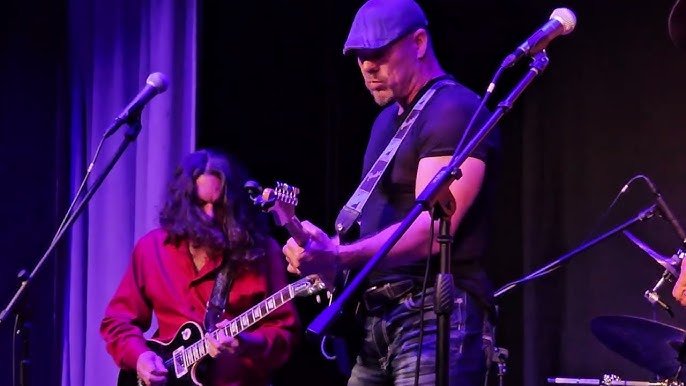
Max Hightower
“Nothin’ But the Truth” album, MoMojo Records
The former harmonica ace and guitar player with Mac Arnold and Plate Full O’ Blues, Hightower steps into the spotlight with this blend of old school blues influences and techniques, combined with an honest, road-hewn and worthy fire-breathing and full-bodied musical approach.
The South Carolina native cut his teeth playing and sharing the stage with some of the best, including Hubert Sumlin, Willie Smith, Bob Margolin, Bob Stroger, Eddie Shaw, Kim Wilson, Bobby Rush, and many others. And he brings that acumen and distinguished resume to what he’s doing here.
“I Ain’t Lyin’” by Max Hightower
Joining Hightower are some of the best musicians in New Orleans, including Brandon Phelps and Nick Solnick on drums, Steadman “Fleetwood” Williams, Sr. and Tyler Thompson on bass, Big Jon Atkinson on lead guitar, James Beaumont on saxophone, and Rob Davis and Brian “BC” Coogan on keyboards. It’s a rough and ready recording where overdubs are kept to a minimum and, as his press material states, “Max poured everything into the sessions—recording in real time, ‘mistakes and all,’ “the way Muddy Waters and Johnny Winter did back in the day.”
This is a mixed bag of jazzy and blues-flavored delights, spanning the gamut of said genres and garnering a plethora of emotions in the process. Tracks like “Double Bubble” and “It’s On Me” deliver on a funky bed of incendiary rhythms and raw impact. “Damned If I Do” has a Stevie Ray Vaughan sort of cadence, with a calm type of sway and swing. Truly, all 12 of the original tracks here are stellar and very worthy of your time. But other highlights that stand out for this reviewer include Rob Davis’ command of the 88s on “My Baby and Me” and “Too Much of Not Enough,” James Beaumont’s wailing horn arrangement on “Thick Jello” and “I Ain’t Lyin’” and the instrumental Meters-like finale “Assmograph.”
Hightower is a multiple threat as a formidable vocalist as well as songwriter and instrumentalist. But one of the main strengths of this record lies in the confidence to surround himself with some of the best people in the biz. Kudos, in particular, should go to Big Jon Atkinson, for not only playing some mean lead guitar throughout, but co-producing the album with Hightower as well as mixing and mastering the final product.
“Nothin’ But the Truth” certainly typifies the essential mood of this recording as the songs are real—fresh, fearless and delivered in a wholehearted and unfiltered state.



